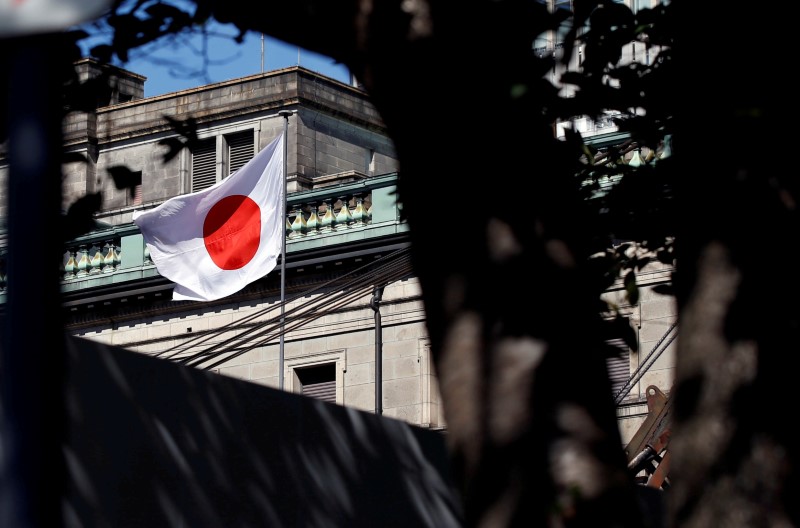
FILE PHOTO: A Japanese flag flutters atop the Bank of Japan building under construction in Tokyo, Japan, September 21, 2017. REUTERS/Toru Hanai/File Photo
November 9, 2017
By Leika Kihara
TOKYO (Reuters) – The Bank of Japan’s nine-member board debated calls from one of its policymakers to target the longer end of the yield curve at a rate review in October, a summary of their opinions showed, with several stressing that the current stimulus was sufficient.
One board member said the BOJ should pledge to guide the 15-year government bond yield lower than 0.2 percent, instead of aiming to guide the 10-year yield around zero percent.
Another board member countered such calls for further easing, saying that taking “extreme steps” to quicken the achievement of the BOJ’s 2 percent inflation target could destabilize financial markets, the summary showed on Thursday.
Expanding stimulus now was inappropriate because it was uncertain whether such a step could help achieve 2 percent inflation earlier, a third member was quoted as saying.
“The current policy is the most appropriate one to lay the grounds for companies to boost productivity, with the smallest degree of uncertainty over its effect on the economy,” the member said.
At the October rate review, the BOJ kept monetary policy steady by a 8-1 vote. Newcomer Goushi Kataoka dissented to the decision, arguing that the bank should make a stronger commitment to ramp up stimulus if domestic factors delay achievement of its target.
Kataoka also called for the BOJ to guide 15-year bond yields below 0.2 percent through its bond purchases. It was unclear at the time whether he wanted the bank to target both 10- and 15-year yields or to switch to targeting 15-year bond yields.
In a quarterly review of its projections also released after the Oct. 30-31 meeting, the BOJ roughly maintained its optimistic price forecasts and its projection that inflation will hit 2 percent during the fiscal year ending in March 2020.
But several board members expressed concerns over Japan’s inflation prospects, with one pointing out that price growth will come under pressure from falling smartphone bills and the fading effect from past gains in energy costs, the summary showed.
“It may take some time before inflation reaches 2 percent,” another board member was quoted as saying.
Japan’s core consumer prices rose 0.7 percent in September from a year earlier, marking a ninth straight month of annual gains but failing to accelerate from the previous month despite brighter signs of growth in the economy.
(Reporting by Leika Kihara; Editing by Sam Holmes and Eric Meijer)

